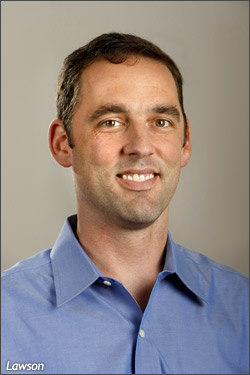Higher Returns Up Search Ad Budgets For Mobile Devices
- by Laurie Sullivan @lauriesullivan, October 13, 2011
 Paid-search ads targeted at tablet devices provide advertisers with a 37% higher click-through rate compared with desktops, and at a lower average cost, according to a study. The Marin
Software Q3 2011 Quarterly Benchmarking Report released Thursday reveals that iPad and tablet users click on more search ads.
Paid-search ads targeted at tablet devices provide advertisers with a 37% higher click-through rate compared with desktops, and at a lower average cost, according to a study. The Marin
Software Q3 2011 Quarterly Benchmarking Report released Thursday reveals that iPad and tablet users click on more search ads.
Consumers seem to click through ads on tablets and smartphones at a higher rate for a lower cost to advertisers, providing a better return on investment. Device targeting began to show promise in Q3 2011, as smartphones and tablets grew in popularity. The increase in smartphone purchases during Q2 fueled investments. The NPD Group notes that in Q2, one in five smartphones -- about 22% of overall sales, up from 3% in the year-ago quarter -- were capable of running at 4G speeds.
Marin managed to gain access to Google data for its clients, and the metrics tell the tale of a growing market. Although 7% share across mobile platforms is not substantial, the data points to rapid growth. Marketers that find it beneficial to run mobile paid-search campaigns realize solid performance across both mobile and tablet devices, especially those with local intent.
Marketers need to remember that smartphones and tablets are in the early stages of adoption and might not fit into all advertising plans. Determining effectiveness means evaluating target demographics -- and where appropriate, leverage efficiencies in performance and cost.
Paid-search spend targeted to smartphones earned 5% and tablets 2% in Q3, but the majority of spend -- 93% -- belonged to desktops.
Advertisers buying paid-search ads on Yahoo and Bing experienced 43% higher click volume at a 10% lower cost per click compared with the year-ago quarter. Despite declines, CTRs rose 9% sequentially, suggesting improved ad matching or traffic characteristics by advertisers.
Matt Lawson, Marin vice president of
marketing, said it appears that Google has begun to "reward" advertisers for not only optimizing sites better, but also managing match types in paid-search accounts. "There's been a market shift
toward clicks on exact and phrase match keywords, and away from broad match keywords," he said. "This shows a stronger incentive to become more relevant."
The nuance of changing investments in paid search match types paid off for some search marketers. Sophisticated match-type strategies--broad, phrase and exact--contributed to improved efficiencies. During the last year, search marketers increased their use of the exact match type, growing shares of clicks by 6%, while only increasing their investment in the category by 2%.
The macro view suggests Google must find new ways for paid search to perform better, as it attempts to take market share from radio, print and TV, as well as other channels such as Facebook. To make the inventory more efficient, it must increase CTRs and lower CPCs for advertisers, Lawson said.
With approximately 800 million active worldwide members on Facebook, marketers now view the social network as a part of the online marketing strategy. The Q3 2011 benchmark report marks the first time Marin analyzes Facebook performance numbers. Metrics across the site for the third quarter include 0.09% average CTR, $0.21 average CPM, and $0.24 average CPC, according to the report.


